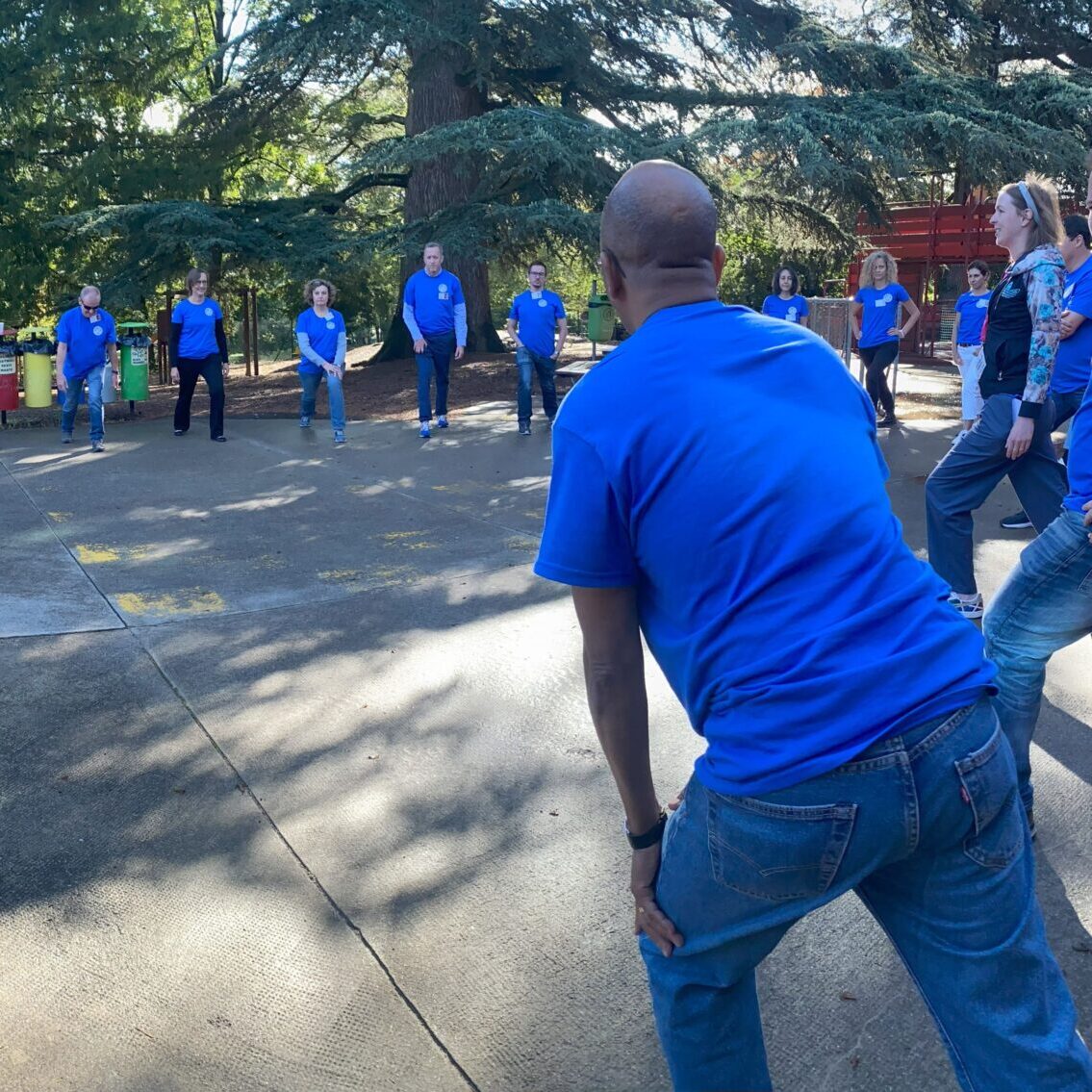Think of the children” – A Live Action Learning Game at the United Nations
- What: A Live Action Learning Game,
- Client: United Nations in Geneva
- For whom: 30 managers
- Duration: 2 days
- Goal: Thinking from the perspective of the target group and advocating for them in decision-making.
- Game setting: An empty elementary school, in which 30 innovative parents (fed up with the current school system) will design a completely new elementary school. Activities included, among other things, redesigning the schoolyard, deciding whether or not to have a school uniform, curriculum design, etc.
We played a two-day Serious Larp with 30 chiefs from the United Nations in Geneva By stepping into the role of innovative parents looking to establish their own school, they gained deeper insights into creativity, risk-taking and thinking from the end user’s perspective.
We created a new reality in a vacant elementary school, with two acres of playground surrounding it. In extended workshops, participants were introduced to the fictional children we had created. Because the characters the participants played were the parents of those children. So participants created their own character, deciding whether they wanted to look like their child or play something different.
In the story, parents collectively had to make difficult choices about the new school they wanted. Hiring teachers, deciding on a grade system and the layout of the school and playground. All with the best interests of the children in mind. And, of course, we had deliberately written the children in such a way that they had varying needs and it took quite a bit of creativity and consultation before the parents could make a good decision.
A living world
Not only did the 30 parents have to make decisions together, we had made sure there was plenty to do so they could walk through the school and really be immersed in the fictional world. There was the future gym teacher who went ahead and did some exercises with them, there were puzzle pieces lost that they had to find together and they could encounter all kinds of social situations, such as finding out that “your child bullied my child.
To achieve the learning objectives, the first day’s design was made on internal conflicts that needed to be overcome. On day two, the common enemy (the school inspection threatening not to allow the school to open) was evident, giving participants a greater sense of belonging. Finally, the School Inspector General visited in person for a grand finale.
Safe and easy to play
When we create such a Serious Game, especially if it is a Serious Larp, we always spend a lot of time that the participants feel comfortable and can easily participate. Each participant gets to decide eleven how exciting their role is, by creating a character that may be very close to them or different from them. We also always provide space for people to step out of the game for a while and have extra roles ready which allow the participants to join without actively participating.
One of the most fun ways we give people permission to play is the prologue. In it, some of the direct colleagues of the participants we prepared show you how to play and what is fun about it. Because we use games and imagination precisely because we feel that experiencing something ourselves is better than hearing about it. And so we also want to give an experience in our explanations rather than just telling you what is going to happen.
What can you learn from it?
So this game is made on the learning objectives more creativity, daring to take risks and being able to see the perspective of the end user of a product or service. This game actually works very well for any team making or doing something for a user they don’t have direct contact with. And it is easily customizable for teams who are in direct contact with their user. We can change the nuance to talk more about collaboration and trust, for example, or put more emphasis on innovation and entrepreneurship.
Serious Larps are ideally suited for all problems where there is a large social aspect. Within the team or with people outside. It helps you put yourself in the other person’s shoes and thus do your work with more emphathy and empathy. We are curious to know what you encounter in your work and how it might help you or your colleagues to immerse themselves in another world for a change.
